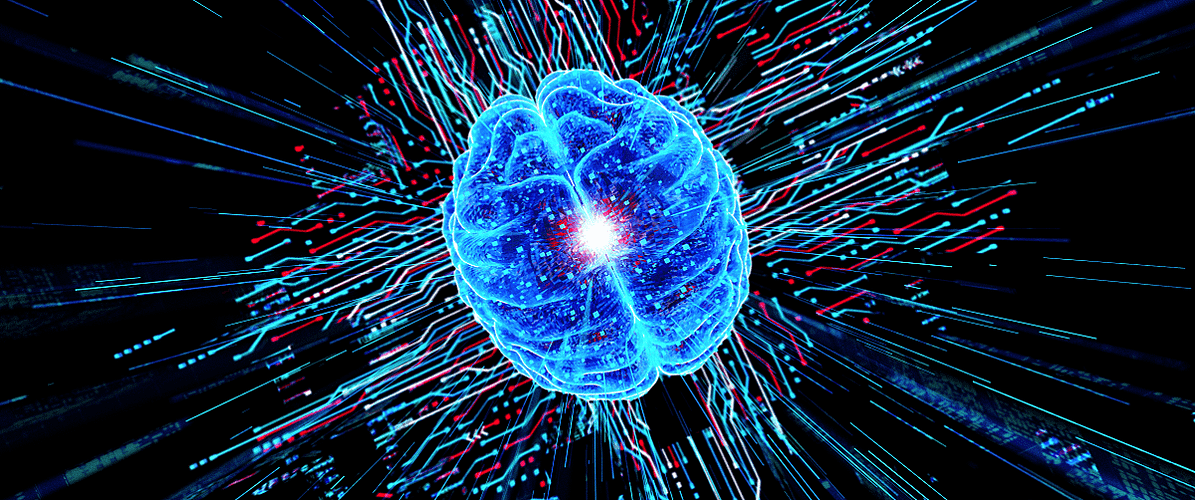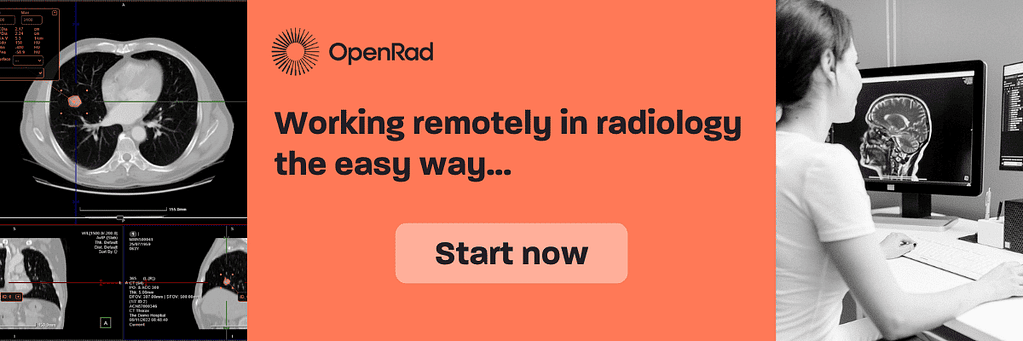Artificial Intelligence has ushered in a new era of possibilities in radiology, propelling medical imaging to unparalleled heights. Let’s explore AI in radiology and look at the where, why and how of it being used.
📖 Author: Emmanuel Anyanwu | Alberta Health Services, Canada
AI’s ability to learn from data, recognize patterns, and make intelligent decisions has revolutionised how radiologists interpret and analyse medical images.
With its swift progress and ever-expanding capabilities, AI has become an indispensable tool in radiology, enhancing diagnostic accuracy, improving patient outcomes, and optimising healthcare workflows.
AI’s presence in radiology is ubiquitous, finding utility in virtually all aspects of medical imaging. It is widely used to analyse various imaging modalities—including X-rays, CT scans, MRIs, mammograms, and ultrasounds.
The technology’s proficiency in automated image analysis enables it to detect minute anomalies, making it a valuable asset for early disease detection and precise diagnosis. However, potential dangers like algorithmic bias and overreliance on AI call for cautious implementation and close collaboration between AI systems and radiologists.
AI in Radiology: The Where, Why & How?
AI bolsters diagnostic accuracy by assisting radiologists in interpreting complex images and offering second opinions, leading to more informed treatment decisions and improved patient outcomes.
Moreover, AI-driven workflow optimisation streamlines the radiological process—reducing wait times, prioritizing urgent cases, and ultimately enhancing healthcare efficiency.
The implementation of AI in radiology revolves around leveraging its robust algorithms and machine learning capabilities. Convolutional Neural Networks (CNNs) are one of radiology’s most commonly used AI architectures, excelling at image recognition tasks.
These networks learn from the data they encounter, continually refining their performance through iterative processes.
Where AI Is Used in Radiology
As AI evolves, it swiftly surpasses human capabilities in analysing large volumes of data—thereby shaping the future of radiology as a dynamic, intelligent, and indispensable component of modern healthcare practices.
Here are some areas where AI has proven helpful in the radiology field:
- Automated image analysis: AI algorithms can analyse vast amounts of medical images with incredible speed and accuracy. It can help reduce human error and improve diagnostic accuracy. By leveraging vast datasets and pattern recognition capabilities, AI systems can identify subtle abnormalities, such as tumors, fractures, or lesions, in various imaging modalities like X-rays, CT scans, MRIs, and mammograms, that may be overlooked by human observers—leading to more precise and timely diagnoses.
- Assisted diagnosis: By analysing medical images, AI algorithms can flag suspicious areas, provide differential diagnoses, and offer recommendations, acting as a powerful second opinion tool.
- Quantitative analysis: AI enables quantitative analysis of medical images, providing objective measurements and assessments. This helps track disease progression, monitor treatment response, and offers valuable insights into personalised patient care.
- Workflow optimisation: AI can streamline radiology workflows by automating routine tasks. This includes image triage, prioritisation of urgent cases, and pre-processing images to enhance quality. AI can also facilitate data integration, allowing seamless access to patient records, prior studies, and clinical guidelines.
- Enhanced productivity: AI can automate repetitive tasks, allowing radiologists to focus more on complex cases and critical decision-making. This improves radiologist productivity—enabling them to interpret more studies in less time without compromising quality.
Potential Risks & Challenges of AI in Radiology
While the integration of AI in radiology offers tremendous potential, it is essential to also address possible risks and challenges:
- Algorithm bias & accuracy: AI algorithms heavily rely on the quality and diversity of training data. Biases in training data can result in algorithmic biases and inaccuracies. Ensuring representative and unbiased datasets is crucial to avoid disparities in diagnoses and treatment recommendations.
- Legal & ethical considerations: The use of AI in radiology raises legal and ethical questions related to data privacy, patient consent, and liability. Healthcare organisations must ensure appropriate protocols and safeguards are in place to protect patient information and address ethical concerns.
- Human-AI collaboration: Successful implementation of AI in radiology requires effective collaboration between radiologists and AI systems. Radiologists must understand AI’s limitations and potential pitfalls, interpreting algorithmic results in the context of clinical expertise.
Altogether, AI is transforming the radiology landscape—empowering radiologists with advanced tools for accurate diagnoses, efficient workflow management, and improved patient outcomes. AI brings unprecedented benefits to the field, from automated image analysis to assisted diagnosis and workflow optimisation.
By leveraging AI’s capabilities as it continues to evolve while addressing its risks, the future of radiology holds promising advancements for better healthcare outcomes, providing a powerful ally for healthcare professionals and ultimately enhancing patient care.
—
What is your opinion on the usage of AI in radiology? Share your experience via the comment section below.
Want to join a great team? Check out our careers section. We are always looking for outstanding talent—from application specialist to software developers.
📷 Photo credits: daniela-mueller.com


